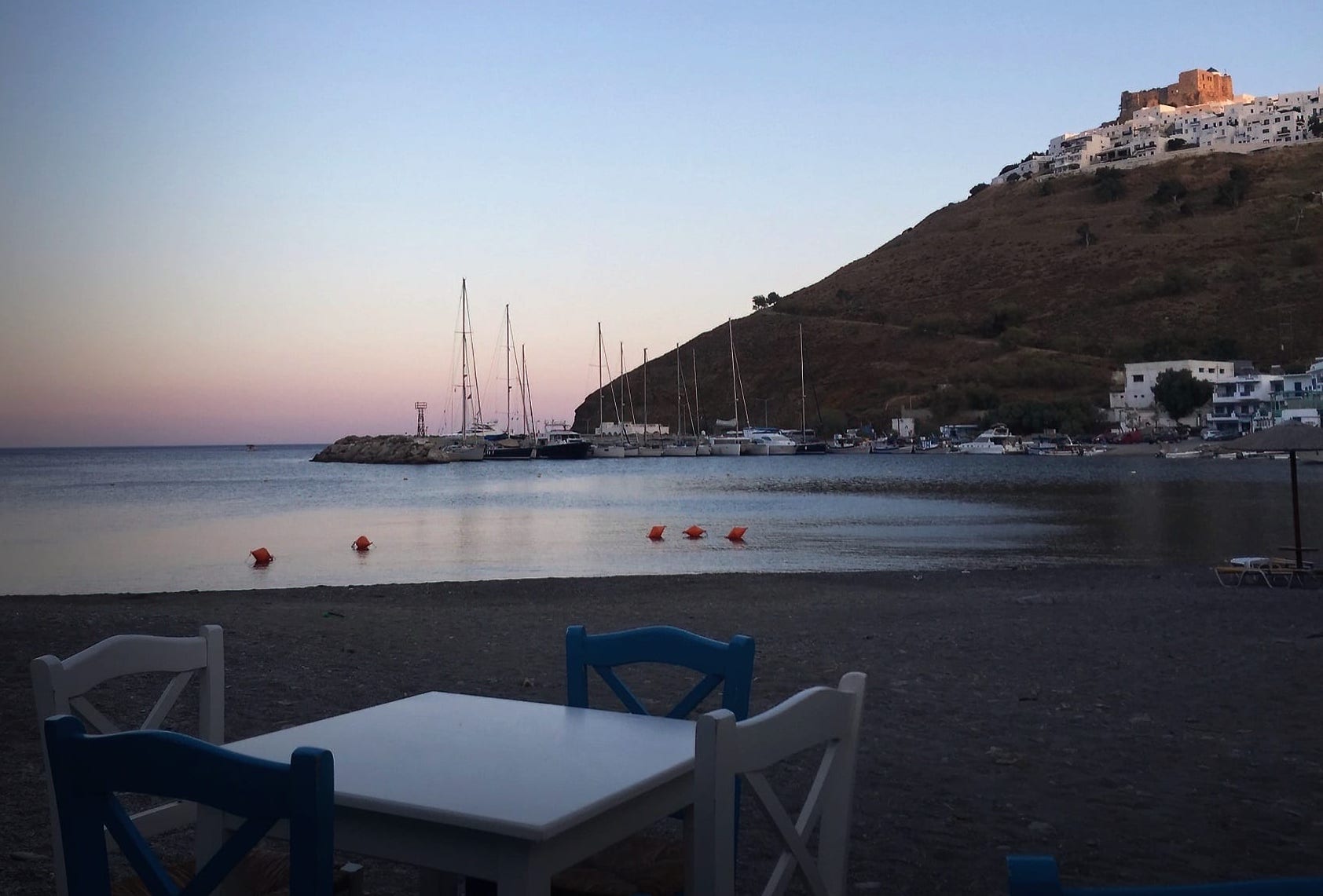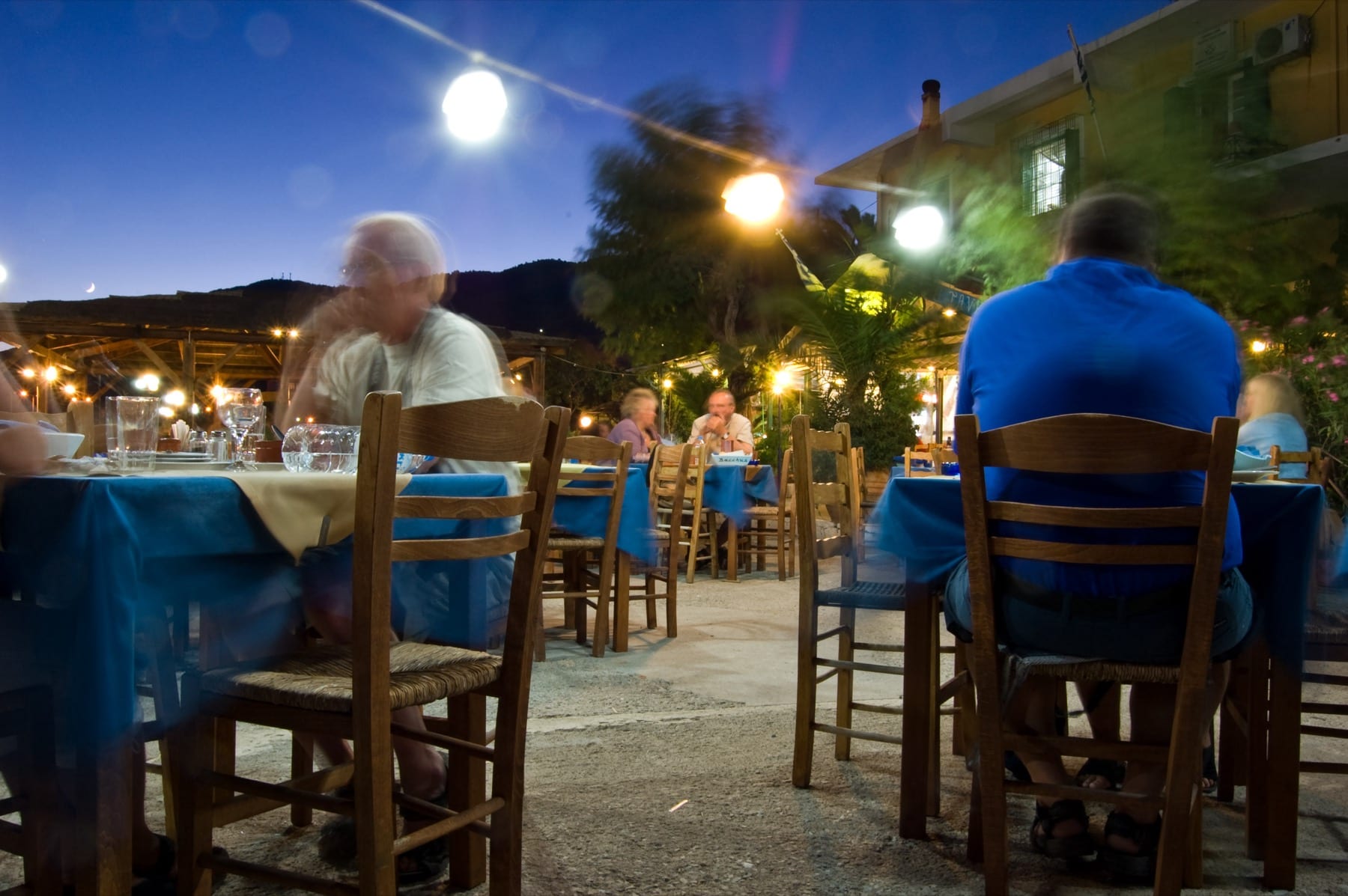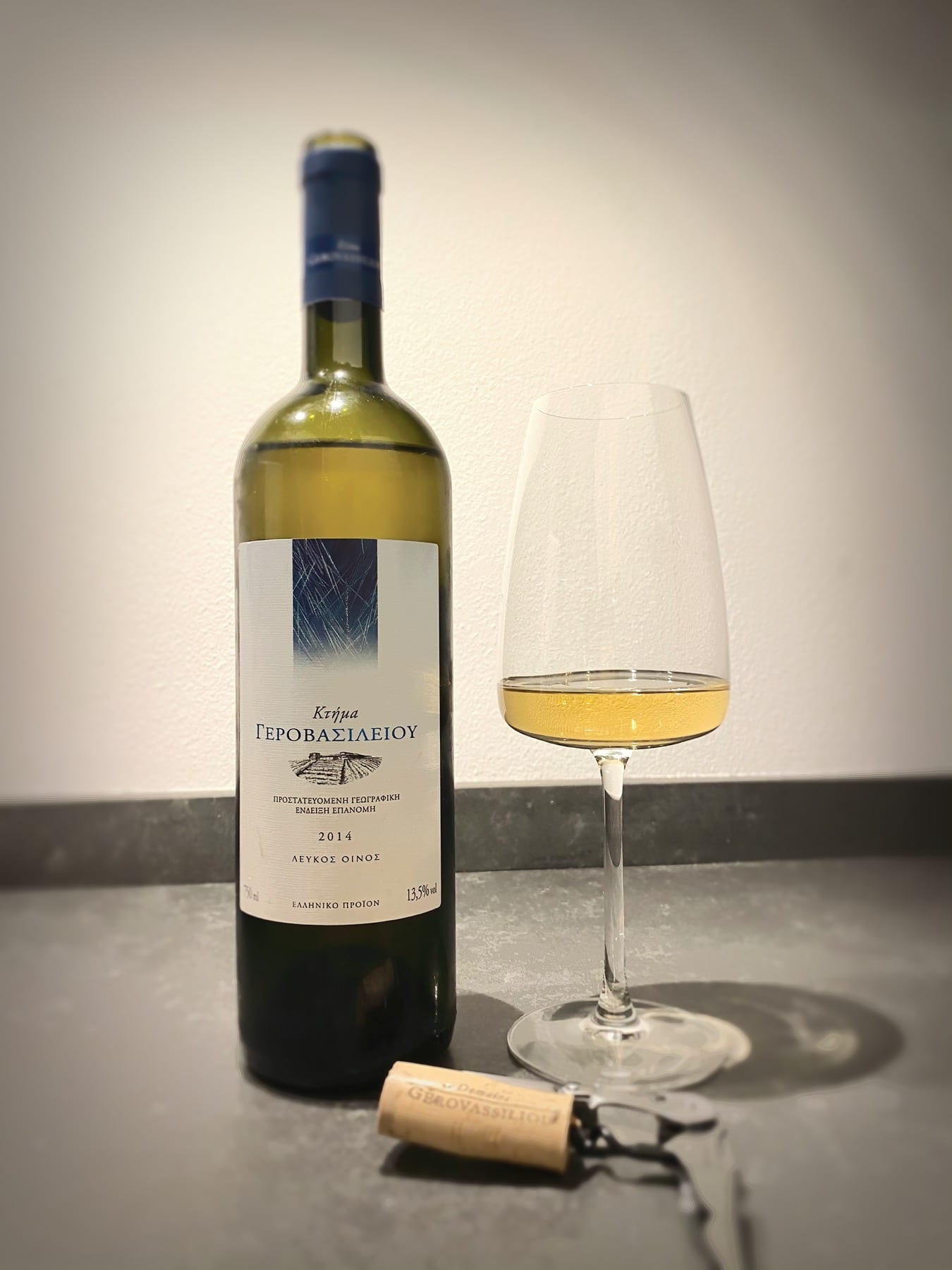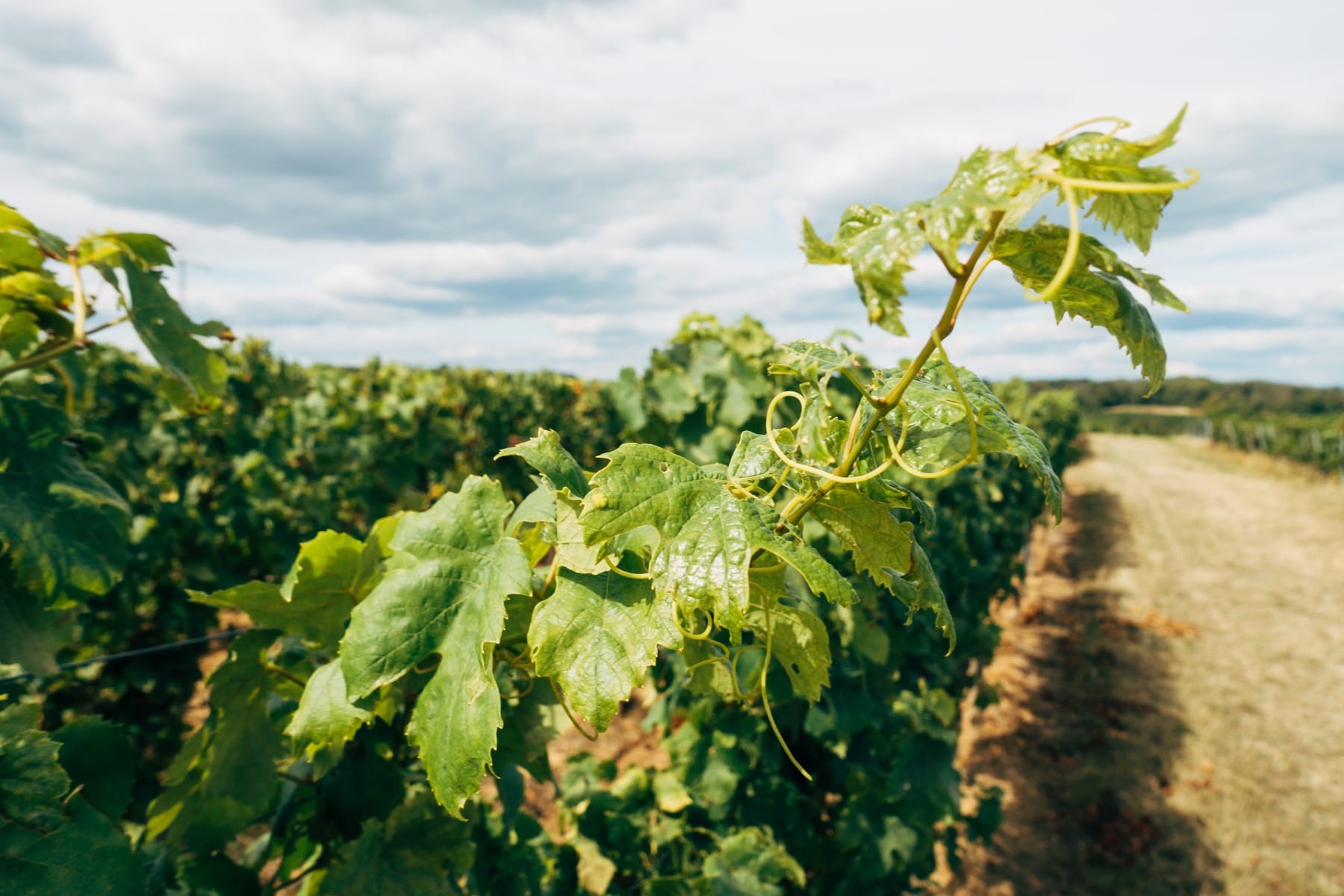Seven years later, an entry level wine is uncorked

Evening drinks and meze on the beach in Astypalaia, Greece
Gerovassiliou wine is somewhat of an institution in Greece. Period.
Their entry level white is imaginatively called lefko (white).
It’s normally consumed fresh, the year of the harvest or one year later, at the latest.
Bottles (many of them!) are served chilled in restaurants and tavernas all over the country. It goes down beautifully as an accompaniment to a few mezes, a seafood meal or in fact, to nothing at all.
It is a reliable, consistent, unpretentious label which is generally enjoyed young.
The Domaine Gerovassiliou entry wine is a blend of Malagousia and Assyrtiko. You may recognise the latter as the native variety of Santorini. And if you are in for an interesting fact about Malagousia, here it comes.
In the early 80s kirio Vangelis, today head of the Gerovassiliou Estate, helped to resurrect this variety. Until then this grape had been somewhat of a Cinderella, disregarded and ignored.
In my long, loving relationship with Greece I have had the chance to drink many, many glasses of this lefko. I always drank them as intended; on the year of the harvest, ice cold, in big quantities.

Photo by Jonathan Lundqvist
Then, one fine day in 2014, I decided to keep a bottle aside.
In part I was intrigued by the aging potential of Assyrtiko.
Partly I’d just spent a long period in Greece and had drank plenty of Gerovassiliou white wine, so much so, I didn’t fancy any more.
2021, 7 years in and the apocalypses probably approaching, I thought it was time to open that bottle.
Tasting Notes: Domaine Gerovassiliou white, 2014
Here is what I found.
The colour, which I know to be pale yellow with a greenish rim, has ripened into an inviting, deep gold.

On the nose the Gerovassiliou wine comes across with Riesling-like notes of rubber and quince. There is a citrusy round touch of lemon curd or meringue and an elegant flowery hint.
On the mouth it is warm and round although freshness is still there.
Could it have gone even longer? I’d be now intrigued to keep a bottle aside for more years, pandemic permitting.
The finish is medium long to long.
I confess that I’m presently surprised. I knew that Domaine Gerovassiliou produces great wines.
This bottle featured in the Wine Spectator Magazine list of top 100 world wines (in 2014). It also won the Platinum medal from the Decanter World Wine Award (in 2019). Plus, the 2019 vintage won the gold medal at the Vinalis Internationals in 2020.
Yet, I wasn’t expecting their entry white to age so finely. Keep in mind that virtually no one would dream to have this wine if more than 1 year old.
Thoughts
Sipping on my glass, I find myself thinking of similarly aged Rieslings. The Gerovassiliou Estate sits in the Epanomi region, in the North of Greece.

Photo by Markus Winkler
Here the soil is sandy with calcareous rocks and fossils. In fact, not that dissimilar to the stony, sandy soil where Riesling often grows. It’s this terroir that gives Riesling those distinctive mineral notes and quince aroma. It looks like it may do the same to Assyrtiko!
So, put in the mineral notes and aging potential of the Assyrtiko. Add on the Malagousia bolder aromas and warmth and you are in for a great development.
Bottom line, if you get your hands on one of these bottles do yourself a favour, forget it.
And forget it for, say, five or six years and be ready for a surprising evolution!
